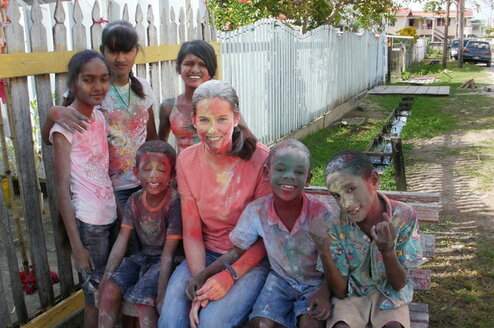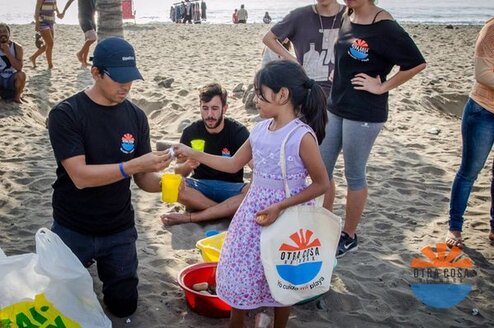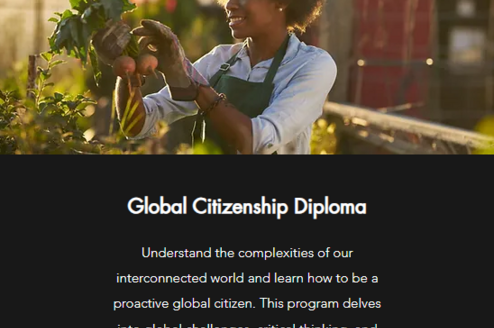Volunteer Programs in South America
Volunteer Programs in South America
Pagination
About
There are numerous possibilities for anyone who wants to volunteer in South America. While there are similarities between all 12 South American countries, each is distinct in its own way.
With a mix of ancient indigenous ruins and Spanish influences, South America is a great place to find a combination of old and new as well as Incan/European cultures. Indigenous cultures and people remain a strong presence in South America, making up about half of the population of some countries such as Brazil and Peru.
Depending on your goals and skills, you could volunteer in South America while learning Spanish, or mentor urban youth. Run a soccer camp or work in environmental conservation. Still in school? Consider a service learning trip in South America to compliment your studies.
Project Types
From fighting poverty and economic disparities, to supporting gender equality and community development, to educating about sustainable environmental practices, there is something for every type of volunteer. Popular fields to volunteer in include: health care and medicine, orphanage work, teaching and education, construction, and conservation.
Community Development
Many areas of social work contribute to fighting economic gaps in South America. Community development volunteers can focus on numerous concerns including economic inequalities and human rights issues.
Working with indigenous communities is a great way to help foster respect and equality. Although indigenous peoples have been fighting to sustain their ways of life since the invasion of the Spanish in 1492, they are still one of “the most disadvantaged and vulnerable groups of people in the world” according to the United Nations Permanent Forum on Indigenous Issues (UNFPII). Most South American countries still have a strong indigenous culture. For example, in Peru, Ecuador and Bolivia, indigenous Quechua peoples make up a majority of the population.
Education
There are many opportunities for volunteers to improve and support education in South America for all. Although attendance and access to schools has increased among children and teens, millions of children are outside of the scope of the formal education system. It is especially hard for children in rural areas to receive a formal education. Volunteers can work with children of all ages to motivate and support them – from tutoring in after school centers to teaching English to mentoring.
Small Business Development
As a visitor to South America, you will notice many locals with small businesses trying to support large families. In addition to agriculture, selling handmade crafts and food on the street is a very common way to make money.
Many overseas volunteer organizations have micro-finance and small business development programs. These organizations give loans and financial advice to those in need. For volunteers interested in business, finance, and supporting new business ventures there is plenty of work to do.
Working with Children
Unfortunately, numerous South American countries have high rates of homeless children. Street children face incredible hardships, from abuse and neglect to a lack of education and basic human needs. In Brazil, the Statute for Children and Adolescents (ECA) reported almost 24,000 young people living in the streets.
Other ways to support the children of South America include orphanage work, teaching, assisting at day care, advocating for family and children’s rights, and more.
Conservation
No matter what type of conservation you’re interested in – wildlife, marine life, environmental – South America is a great place to volunteer. Conservation is popular in South America because of the large number of natural resources, biodiversity and wildlife – which make up 40% of the world’s plant and animal species.
The Galapagos Islands, Patagonia and the Amazon rain forest are especially great places for volunteers who are looking to get outdoors and work with wildlife and the environment.
Need to Know
South American Lifestyle and Culture
While it’s hard to classify such a large and diverse country, one thing remains consistent: the emphasis on family life. Families are close-knit, emphasized over work life, and large in size. This is an especially great reason to consider a homestay option in South America.
South America is largely influenced by Spanish and Portuguese culture, as well as immigrants from Africa, India, Asia and other parts of Europe. These influences can be seen in all areas of life: food, dance, language, music, literature, architecture, religion, and more.
Languages in South America
Spanish is spoken almost everywhere in South America. Although Spanish is the official language in most South American countries, Portuguese is a close second. In Brazil, Portuguese is the official language.
A few other exceptions to the Spanish standard are Guyana (where English is the official language), and Suriname (where Dutch is the official language). A large number of South Americans also speak indigenous languages and dialects. In more rural areas, it’s hard to find anyone who speaks English and sometimes Spanish too.
Questions to Ask
What country is right for me? Do I want to live in a rural area or a city, in the mountains or on a beach? What are my volunteering motivations? What field/sector do I want to volunteer in? What language do I want to speak? What kind of accommodations would I like – homestay, apartment, living with other volunteers? Answering these questions will be essential to planning the best trip imaginable.
Costs
While the cost of living will vary throughout the continent, volunteers in South America live cheaply. South America is generally thought of as a continent of developing nations. There are large economic gaps, leaving many rich (and sometimes corrupt) people who can easily ignore the suffering of others. Generally, bigger cities and popular tourist destinations will be more expensive while small, rural, indigenous areas will be cheaper.
According to FinFacts, the most expensive cities in South America are Sao Paulo and Rio de Janeiro, Brazil; Havana, Cuba; Bogota, Colombia; followed by Brasilia, the capital of Brazil.
Since a number of the more expensive cities are in Brazil, the Brazilian Real currency has strengthened. Overall, Buenos Aires, Argentina ranks somewhere in the middle. Managua, Nicaragua; La Paz, Bolivia; and Asuncion, Paraguay are the cheapest cities in South America.
Contributed by Katie Boyer
























